Crabs are a widely differentiated part of the crustacean phylum. There are over 4000 varieties in existence, and they come in sizes ranging from a few millimeters to a few feet.
Although they mostly share a few features, such as having exoskeletons or paired legs, crabs exhibit individual differences.
You may be surprised to know that some do not produce their own shells but fight and steal for that protective material.
Crabs also vary in their distribution across the world and, particularly, their habitat preferences. Some like saltwater, others appreciate freshwater, and you will find some somewhere in the middle.
In this article, we discuss the crabs you will likely find in Florida. Many crabs are edible, and you will learn which types will probably be sitting atop a Floridian dining table. Let’s get started.
Table of Contents
Blue Crab
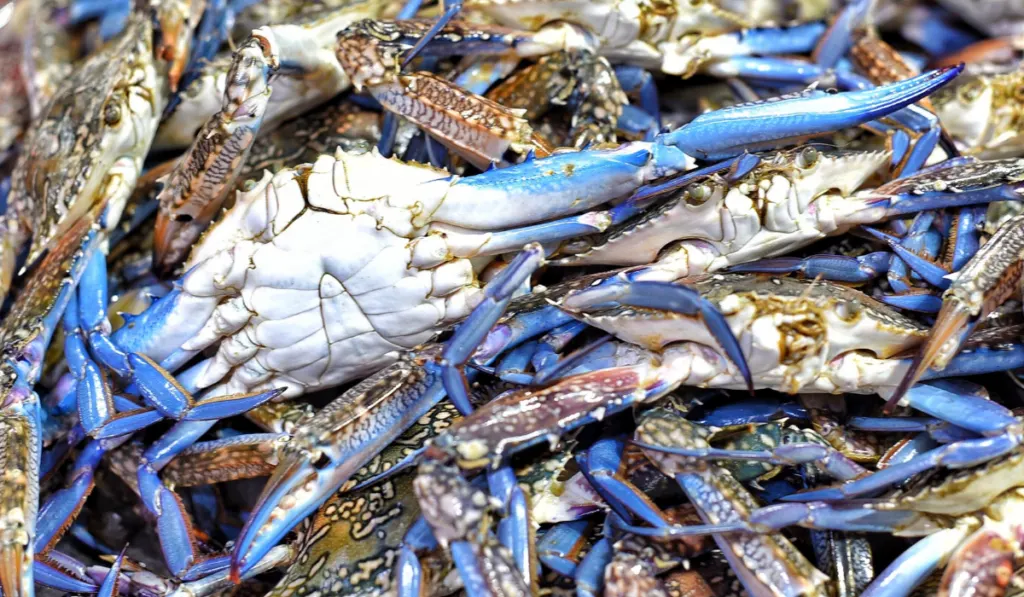
These are very common in Florida. They are found in virtually all Florida’s coastal waters (and the eastern coast of the United States). It is also commonly called the Atlantic Blue Crab.
This crab is a part of a swimming family of crabs, and one pair of its five pairs of legs is dedicated for this purpose.
The blue crab isn’t anything too spectacular when it comes to size. Although it can potentially grow up to 9 inches (tip-to-tip of their carapace), it does not usually get to this size before it is harvested. You are more likely to come across those spanning 3.5 to 5 inches.
Blue crabs are among the most popular type of crabs to eat in Florida. Interestingly, cooking the blue crab makes it turn red. When you extract the meat, you find a tender, possibly sweet-salty flavor.
You can also serve Blue crabs soft-shelled. This is possible if you catch them just after they lose their old exoskeleton.
Catching Blue crabs in Florida is not without rules. For example, Florida has shut-off dates when fishing (crabbing) is disallowed. This only applies when you are catching them within three miles of the shore.
When crabbing over three miles offshore, you have to get a saltwater license before you can catch them during the official hunting period.
Otherwise, you can catch the crabs all year round. You are also advised to throw female blue crabs back, particularly if they are with eggs.
Fort Clinch State Bank, Simpson Creek, Port St. Joe, and the south of Amelia Island are good spots for Blue crabs.
Stone Crab
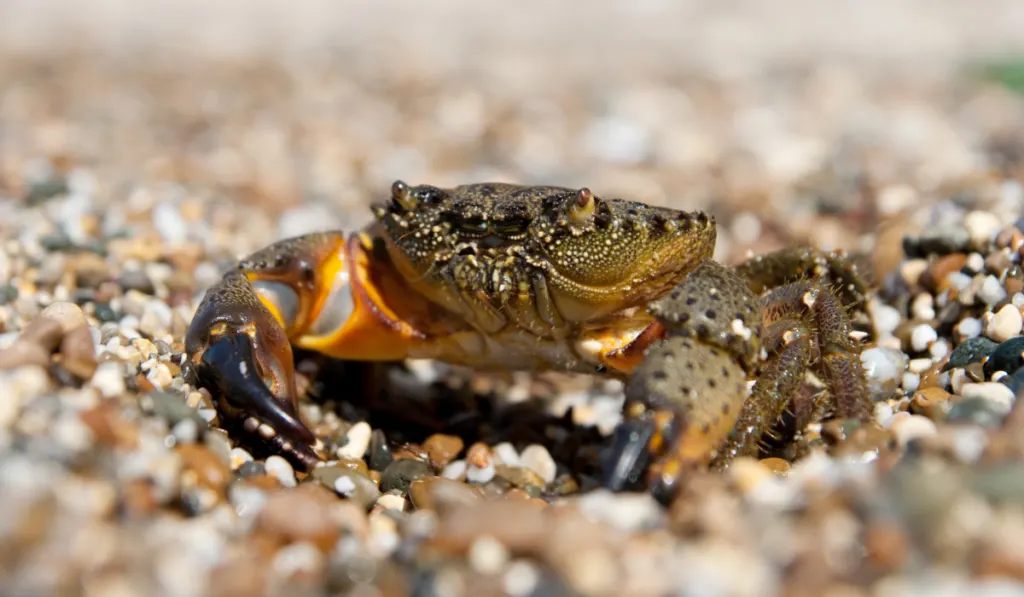
Since they are common in Florida, they are often called Florida Stone Crab. Stone crabs have enormous claws, which contain most of their meat.
The Florida stone crab is usually harvested by removing one claw – the larger one – and leaving the other.
The practice of leaving one claw ensures that the crab can keep feeding and protecting itself when returned to water.
Some folks harvest both claws of the crab. But barring any unexpected occurrences, the claws should grow back within 18 months.
This saltwater crab’s claws can grow up to 3 inches and is moderately sized, with its carapace spanning about 6.5 inches. Also, Stone crabs differ in size based on their gender, with the males having bigger claws than the females.
Stone crab meat is firm, sweet, and succulent. After being boiled, they are usually frozen before being eaten to remove traces of an iodine taste in the meat.
There is a window for harvesting stone crabs in Florida. This window runs from October 15 to May in the following year. If the claw size is not up to 2.9 inches, they should not be harvested.
Stone crabs are usually found in the southern and western parts of Florida. You may find them in the Florida Keys, particularly Sawyer Key and Pavilion Key. You may also be able to catch them at Tampa Bay and Oxford Bank.
Golden Crab
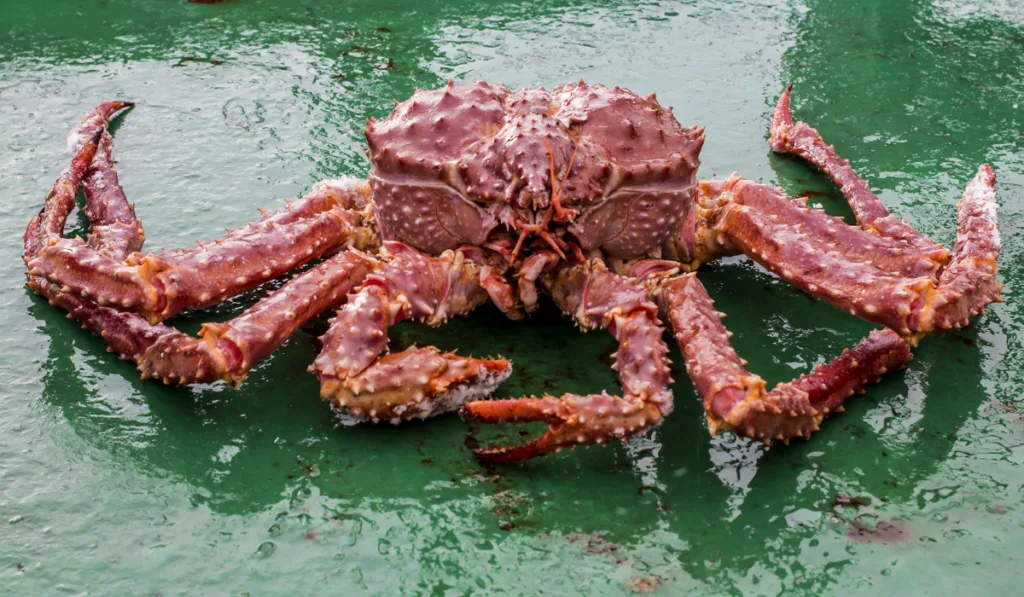
The Golden crab is a lesser-known variety of crab found in Florida. This is not so surprising when you consider that it is non-swimming. Since it is non-swimming, the Golden crab is commonly found at great depths of water.
It is also a saltwater crab like the others commonly found in Florida. It sports a cream-colored carapace that measures up to 8 inches.
You will need a cold storage unit when harvesting a Golden crab. It is used to a cold environment, which must be mimicked well enough to ensure its survival during transport back to shore.
The white meat from the golden crab is sweet and delicate and generally low in fat.
To get golden crabs in Florida, you may have to explore the Gulf of Mexico’s deep waters and those at the southern Atlantic coast.
Fiddler Crab
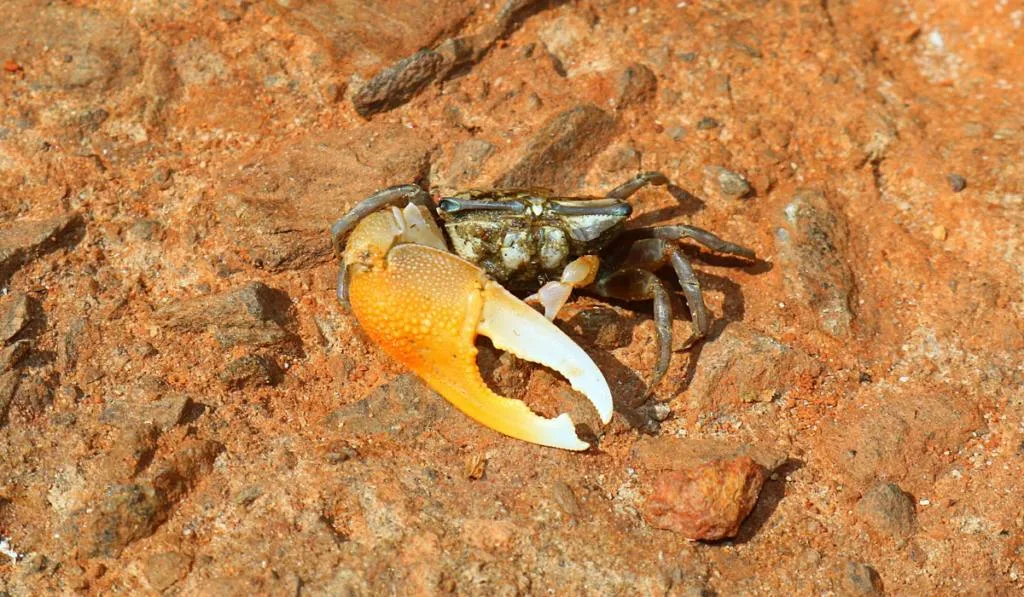
You’ll find various Fiddler crab species in Florida, but the most common one is the Atlantic Sand Fiddler. Other species you’ll find in Florida are the Atlantic Marsh Fiddler crab and the Red-Jointed Fiddler crab.
Fiddler crabs are semiterrestial; you can find them on land and in saltwater. If you want to find one of these in Florida, you’ll have more luck searching for them in the Florida Keys area.
Fiddler crabs are about 1-1.5 inches wide, with the males being relatively bigger than the females. They have distinct large claws relative to their small bodies, and they feed on bacteria, marsh plants, and algae.
Hermit Crab
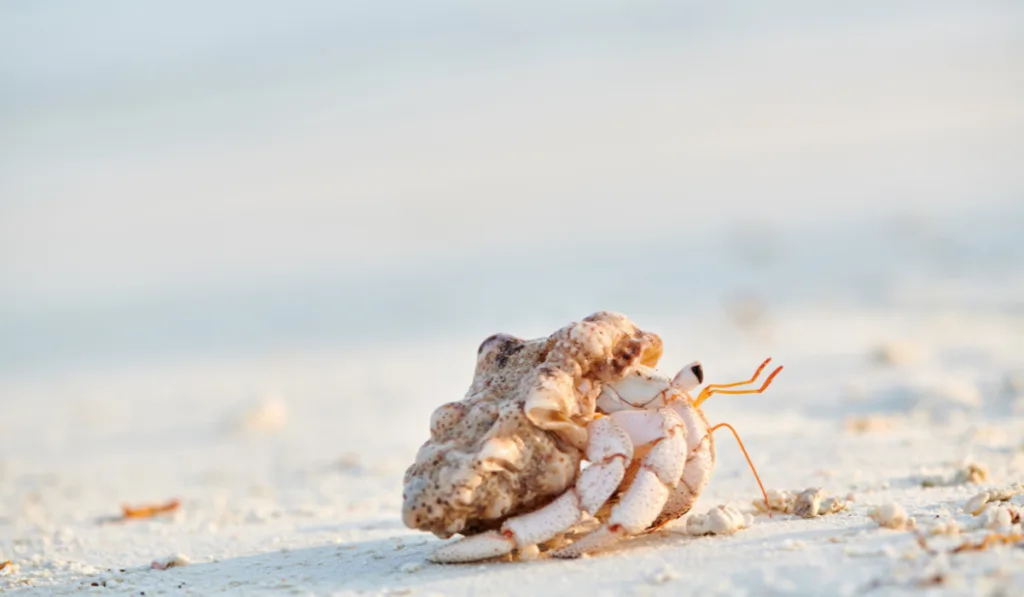
Hermit crabs can be found in the Florida Keys, and there are more than nine species available in this region.
An interesting thing about hermit crab is that they do not make their own shells. Rather, they go after empty seashells and live in them. Then they change the shells as they grow, getting a bigger one each time.
Some Hermit crabs live on land, but most of them live in saltwater habitats.
Horseshoe Crab
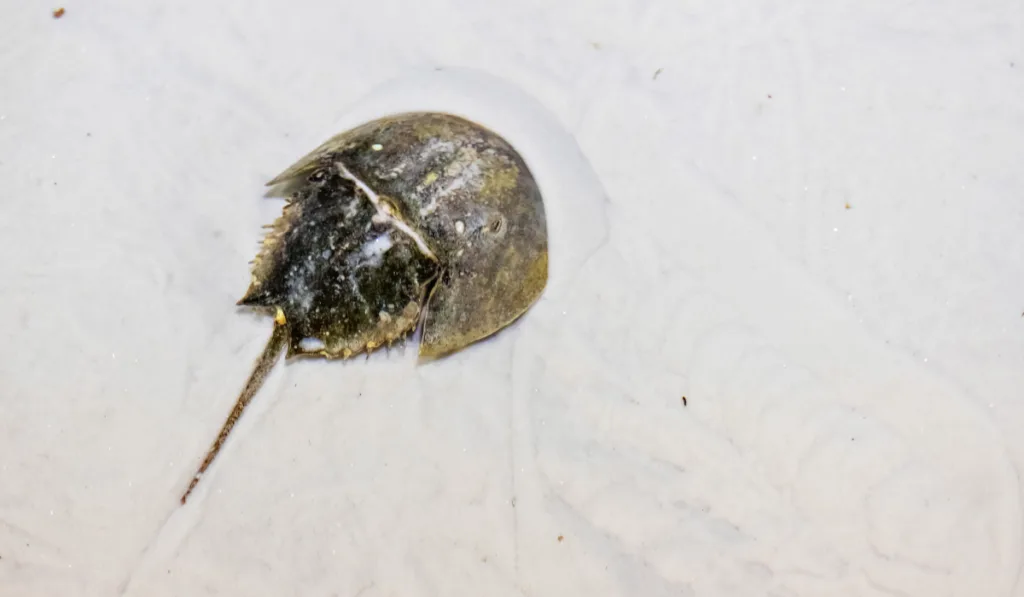
They look a tad bit like horseshoes, so they are called Horseshoe crabs.
Horseshoe crabs have been around for about half a billion years, and well, they are still here.
They are commonly found around the Atlantic coast, the Philippines, India, and the Asian coasts. But you can also come across them while walking on a beach in Florida.
Horseshoe crabs are saltwater crabs. They are edible and tasty, albeit the relative amount of meat to shell is small. You will not commonly find a horseshoe crab on the menu in Florida. The stone crab, blue crab, and golden crab are the usual suspects.
One interesting thing about this type of crab is that they have 10 eyes and a spike-like tail. The tail is not harmful, but carrying the crab with it can harm them.
Spider Crab
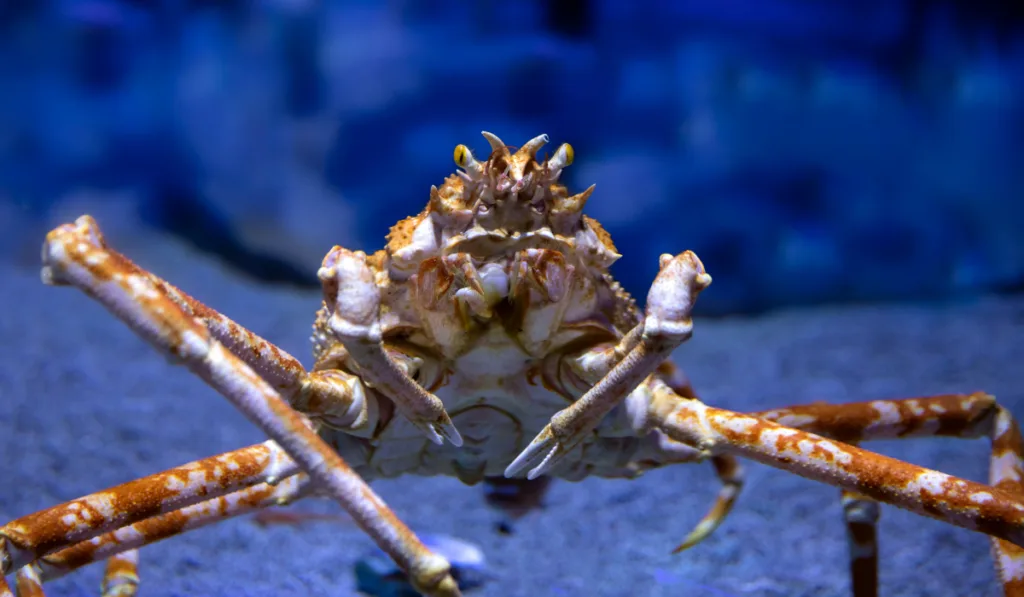
Spider crabs have eight legs just like spiders, hence the name. They can be found in various locations along the coast of Florida, such as St. Joseph Bay.
Spider crabs are saltwater crabs. Although they are edible, most people do not really bother with them because they have very little meat.
This type of crabs are scavengers, and they are great at camouflage. While spider crabs do not have great vision, their chemoreceptors make up for the visual shortcomings.
Final Take
The most common types of crabs in Florida are the Stone crab, Blue crab, and Golden crab. But besides these, you may also come across many other types. If you ever decide to hunt crabs in Florida, be sure to check the local regulations and follow them.
Resources
- https://naturetingz.com/types-of-crabs-in-florida/
- http://www.foodreference.com/html/art-golden-crab-7806.html
- https://captandersons.com/about/species-golden-crab.htm
- https://nayturr.com/types-of-crabs/
- https://leafyplace.com/types-of-crabs/
- https://naturetingz.com/types-of-crabs/
- https://skyaboveus.com/fishing/Blue-Crabs-My-Best-Crabbing-Spots-in-Florida
- http://jrscience.wcp.muohio.edu/fieldcourses02/PapersMarineEcologyArticles/CrabsinFlorida.Abriefsumm.html
- https://animals.mom.com/list-florida-crustaceans-10143.html
- https://www.starfl.com/article/20140213/news/302139928
- https://gulfspecimen.org/spider-crab/
- https://www.dailykos.com/stories/2018/9/7/1793991/-Wild-Florida-The-Fiddler-Crab
- https://www.chesapeakebay.net/S=0/fieldguide/critter/fiddler_crabs
- https://www.keywestaquarium.com/hermit-crabs
